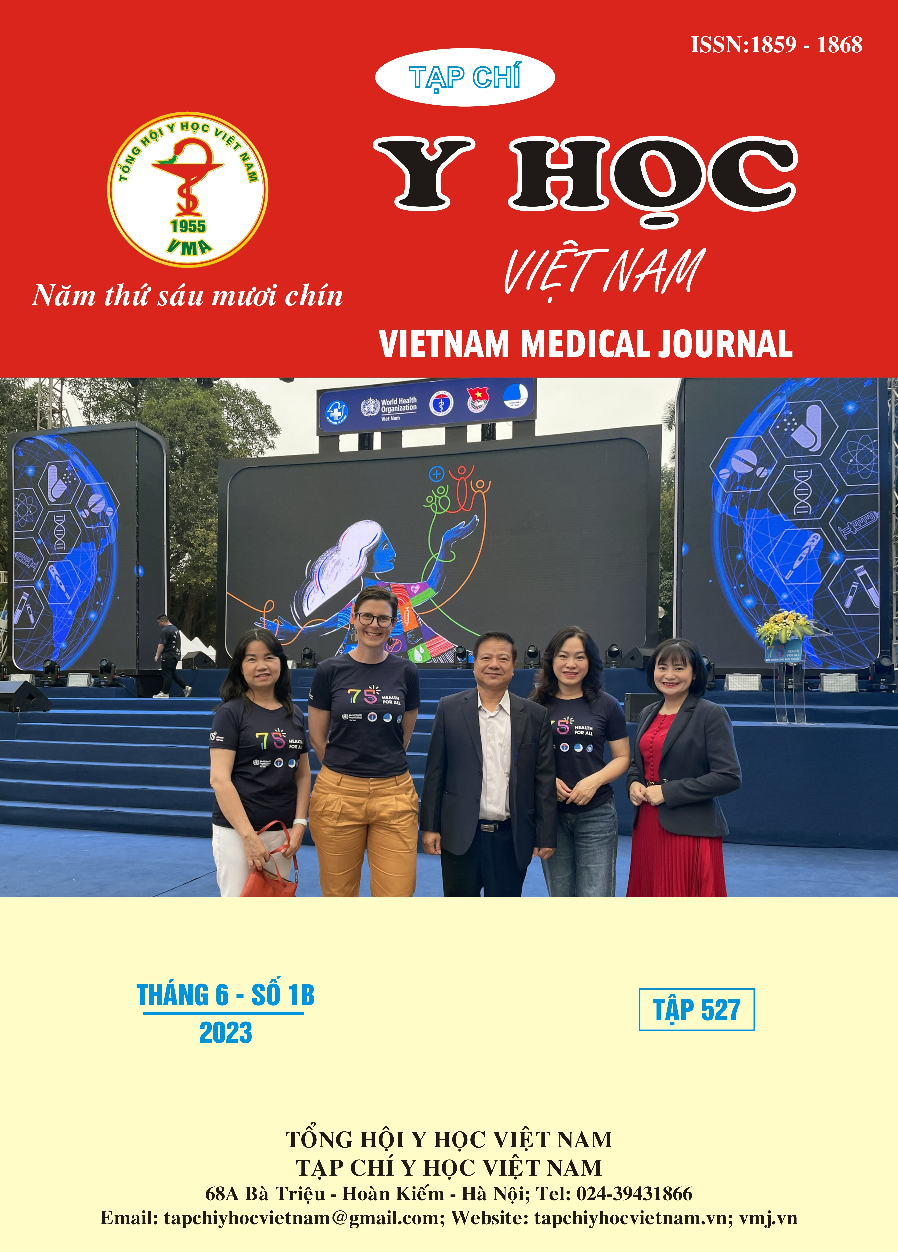ASSESSMENT OF COMPOSITIVE COVERING CAPACITY OF DECELLULARIZED PIG PERICARDIAL IN THE MAXILLARY DEFECT IN RABBITS
Main Article Content
Abstract
Background: Decellularized pig pericardial tissue holds promise to perform better than immobilized and regenerated tissue, but cell degranulation has been shown to damage collagen structure and impair integrity. tissue mechanics. Objective: To evaluate the ability to cover bone defects of decellularized pig pericardial on rabbit jawbone. Materials and methods: Research object: Decellularized pig pericardial produced from pig pericardium at the Biomaterials Laboratory - University of Natural Sciences, Vietnam National University, Ho Chi Minh City Minh. - Commercial acellular pericardium: Decellularized pig pericardial XenoGide, NIBEC (Korea) has been licensed for use. Neobone Commercial Bones, Portugal. Experimental Rabbits: Healthy, Non-Purebred New Zealand Rabbits. Research location: Biomaterials Laboratory - University of Natural Sciences, Vietnam National University, Ho Chi Minh City. Research period: from July 2021 to August 2022.2. Study design: a double-blind experimental descriptive study. Result: - The results showed that after 3 months of transplantation: the bone healing process in the transplant group with decellularized pig pericardial was similar to that of commercial pericardium: the bone healed completely after 3 months. - No infiltration of fibrous tissue was detected in the bone marrow and very few inflammatory cells were present. Conclusion: The dPP Decellularized pig pericardial is a good support for the bone healing process in the maxillary defect in rabbits.
Article Details
Keywords
: Acellular pericardium, covering
References
2. Benito-Garzón L, Guadilla Y, Díaz-Güemes I, Valdivia-Gandur I, Manzanares MC, de Castro AG, Padilla S. Nanostructured Zn-Substituted Monetite Based Material Induces Higher Bone Regeneration Than Anorganic Bovine Bone and β-Tricalcium Phosphate in Vertical Augmentation Model in Rabbit Calvaria. Nanomaterials (Basel). 2021 Dec 31;12(1):143
3. De Lucca L, da Costa Marques M, Weinfeld I. Guided bone regeneration with polypropylene barrier in rabbit's calvaria: A preliminary experimental study. Heliyon. 2018 Jun 8;4(6)
4. Joshua A. Choe (2018), “Biomaterial characterization of off-the-shelf decellularized porcine pericardial tissue for use in prosthetic valvular applications”, J Tissue Eng Regen Med, Vol. 12 (7), pp. 1608-1620.
5. Kotagudda Ranganath S, Schlund M, Delattre J, Ferri J, Chai F. Bilateral double site (calvarial and mandibular) critical-size bone defect model in rabbits for evaluation of a craniofacial tissue engineering constructs. Mater Today Bio. 2022 Apr 20;14:100267-10
6. Lundgren AK, Sennerby L, Lundgren D. An experimental rabbit model for jaw-bone healing. Int J Oral Maxillofac Surg. 1997 Dec;26(6):461-4.
7. Lundgren AK, Sennerby L, Lundgren D. Guided jaw - bone regeneration using an experimental rabbit model. Int J Oral Maxillofac Surg. 1998 Apr;27(2):135-40A.
8. Piotrowski S.L., Wilson L., Dharmaraj N., Hamze A., Clark A., Tailor R., et al. Development and characterization of a rabbit model of compromised maxillofacial wound healing. Tissue Eng. C Methods. 2019;25(3):160–167


